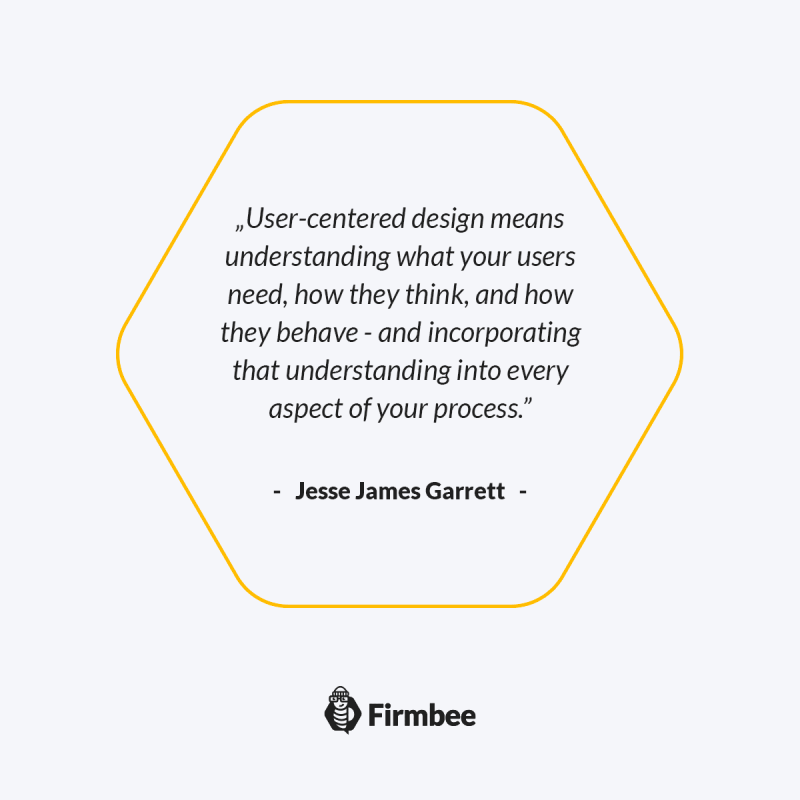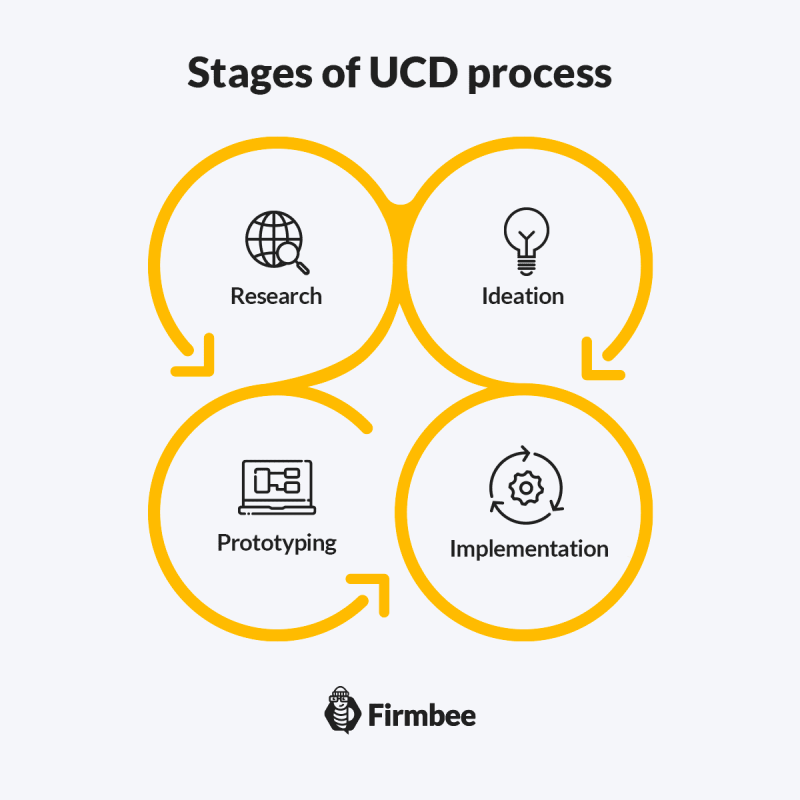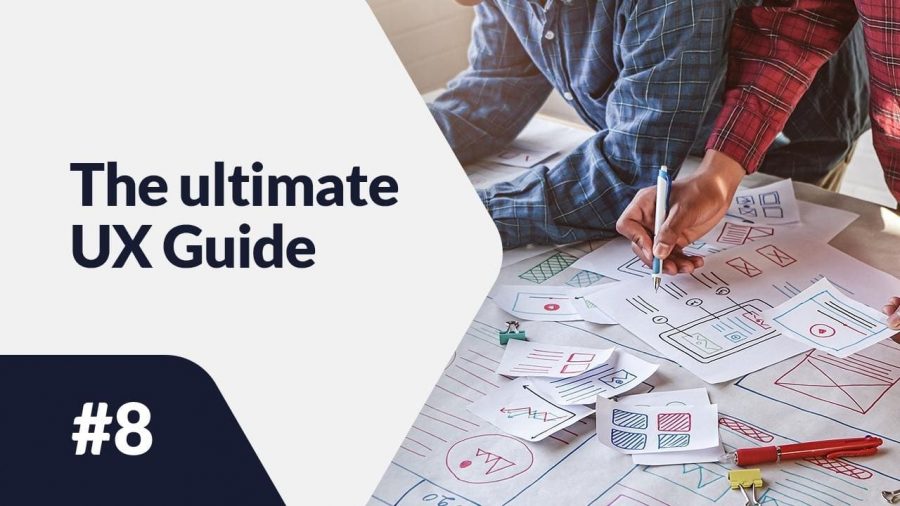What are its core tenets and its methodology? What are its characteristics, and what benefits can it bring to customers, designers and businesses? You’ll find it all in the following text, as today we’d like to present User-centered design principles.
User-centered design and its main principles – table of contents:
- User-centered design
- Principles of User-centered design
- What does the process look like?
- Advantages of using User-centered design methodology
- Summary
User-centered design
User-centered design (or UCD) is an approach to designing the interaction between humans and digital products that puts the users at the center of the process. Their pains, requirements, need and desires come into focus in great detail.
The UCD method features a multi-step problem-solving attitude. Its key requirements are the UX /UI design and a development team to confidently anticipate the user interaction with the product.

Principles of User-centered design
However, it is a good practice not to rely only on assumptions or predictions, but to involve users in the research and testing process from the very beginning until the solution comes up and gets implemented (and also during subsequent iterations, when testing usability and introducing required improvements). By involving users in the process – that is, people who will potentially apply the product or solution – its designers can gather reliable information concerning users’ requirements, troubles or needs, and then establish a product/service/solution to carefully meet them.
The philosophy of User-centered design focuses on finding answers to the following questions:
- Who is our user and what is important to them?
- What are the goals and tasks of the user (user jobs)?
- How and in what order does the user perform their tasks?
- What conditions make the user achieve their goals?
- What are our user’s pain points, problems and limitations?
- What are the user expectations for our solution?
What does the process look like?
By applying the USD methodology and appropriately selected research methods in particular phases of the project, the designers can constantly improve the project so that it responds to the users’ needs and meets their objectives to the greatest extent possible.
The User-centered design process consists of four stages that repeat cyclically until the previously assumed usability requirements are achieved.
- The first is the research phase, which aims to empathize – that is, to understand our user’s problems, pains, behaviors, requirements, needs and desires.
- Phase two focuses on establishing and gathering ideas for the project. In this phase, UX designers use the knowledge gathered in the research phase to propose solutions for the project.
- The third stage is already about design – creating the first Lo-Fi mockups with a focus on content and information architecture.
- The last phase consists of usability testing with potential users. This is how designers check if the solutions they propose meet the users’ expectations. However, it is not always the last stage of the design process – there may be a need to return to the stage of mock-ups, establishing the concept, or even research to improve the operation and functionality of the product.
The different phases of User-centered design will be detailed in the next post about phases of User-centered design.

Advantages of using User-centered design methodology
The User-centered methodology allows obtaining the information necessary to design a digital product tailored to real user needs. It establishes the construction of a practical and intuitive website/digital product right from the start.
Basing the research on results and user suggestions avoids wrong design practices and saves time and funds later – the blueprint after implementation will not require as many corrections and improvements as if based only on the assumptions of and development team.
Summary
The User-centered design discussed in the article thus focuses on the users, their pains, requirements, needs and interaction with the digital product. It allows UX designers to create a product that meets real needs. The approach has many advantages and by applying it, you can get substantive results quickly.
That’s all you need to know about UX design processes. Follow our blog category “The ultimate UX Guide” so you don’t miss any of our next articles.
If you like our content, join our busy bees community on Facebook, Twitter, LinkedIn, Instagram, YouTube, Pinterest.
Author: Klaudia Kowalczyk
A graphic & UX Designer which conveys into design what cannot be conveyed in words. For him, every used color, line or font has a meaning. Passionate in graphic and web design.
The ultimate UX Guide:
- What is UX – and what it is NOT
- UX and UI – are they comparable?
- 7 factors of (outstanding) User Experience
- Do you know what UX Design means?
- Are you designing user experiences? Take care of these things!
- 10 usability heuristics for UX design you need to know
- The UX design process in 5 easy and simple steps
- User-centered design and its main principles
- Stages of User-Centered Design process
- What is Customer Experience?
- User Experience vs Customer Experience. A simple explanation of their relationship
- What is a Brand Experience?
- What is Human-Computer Interaction (HCI)?
- Why UX is important?
- Usability vs functionality in UX
- Examples of good UX design


















